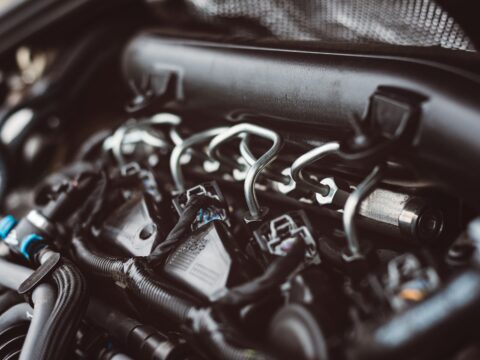Experiencing car trouble is a massive inconvenience that everyone tries to avoid. After all, it can disrupt one’s schedule and productivity. As such, every vehicle owner’s top priority is ensuring that their cars are well-maintained.
One of the ways to ensure that your vehicle remains in optimum condition is by understanding the different diagnostic trouble codes and knowing how to handle each of them.

Contents
What Is a P1093 Code?
For those who have a Duramax engine you may have seen a P1093 code. You might also be wondering what it stands for. In simple terms, a P1093 code means that your engine is experiencing low fuel rail pressure.
A low fuel rail pressure could result in numerous issues, such as low acceleration, engine stalls, rough idles, and engine misfires. Given this, you need to note a few things about fuel rail pressure.
What Should Fuel Rail Pressure Be On Duramax?
The first thing you need to know is the appropriate fuel rail pressure for your engine. For a Duramax engine, the fuel rail pressure should be a minimum of 1,500 psi while cranking. At the same time, your reading should be at a minimum of 5,000 psi while idling.
Anything below this specified range is considered low fuel rail pressure, which could trigger a P1093 code.
Where Is the Duramax Fuel Rail Pressure Sensor Located?
After learning the ideal fuel rail pressure for a Duramax, the next thing on your list is locating the fuel rail sensor. It is an integral part that helps you monitor your engine’s fuel rail pressure.
You can find the sensor under the EGR Cooler mounted on the right fuel rail. Then, remove the EGR cooler and heat shield to access the sensor.
What Causes Low Fuel Rail Pressure in a Duramax?
Now that you have all the essential information about fuel rail pressure for a Duramax, let’s discuss the various possible causes of a low fuel rail pressure that leads to a P1093 code.
A Dirty Fuel Filter
Having a clogged or dirty fuel filter is one of the most common reasons for low fuel rail pressure. As its name implies, a fuel filter is a crucial component that is responsible for protecting the fuel system and keeping your fuel clean.
Specifically, it screens out foreign particles such as dirt, dust, and rust. Over time, the contaminants can create a buildup of sludge and even microbial growth, which can block the fuel filter and result in low fuel rail pressure.
A Leak in the Fuel System
As vehicles naturally experience wear and tear, there might be instances where your fuel system leaks, which is common among high-mileage cars. A telltale sign of leakage is fuel puddles on the ground. This means that your engine is not getting the right amount of fuel and would therefore result in low fuel rail pressure.
A Faulty Fuel Rail Pressure Sensor
Having a faulty component is another reason for low fuel rail pressure. For example, a malfunctioning FRP sensor will negatively impact the air-fuel ratio, which means the correct fuel pressure is not achieved. A defective FRP or fuel rail pressure sensor will have various symptoms, like having difficulty starting the engine, stalling, and an activated check engine light.
A Clogged Fuel Injector
In diesel engines such as the Duramax, the fuel injector is responsible for providing a precise amount of compressed, atomized fuel into each cylinder. However, it can progressively collect soot, grime, and dirt. When this happens, the fuel injector becomes compromised, and the correct fuel pressure is not achieved.

How Do You Fix a P1093 Error Code?
The way to fix the error code depends on what is causing the problem. Let’s look at each issue individually.
Fix the Fuel Filter
If the reason for your low fuel rail pressure is due to a dirty fuel filter, you need to check the extent of the blockage. Depending on your diagnosis, you can either still clean it off or replace the filter with a new one.
It is also important to note that fuel filters should be routinely replaced due to their nature. As a rule of thumb, it should be changed every 30,000 miles or two years, depending on which comes first. Using high-quality fuel is also an excellent way to ensure that your fuel filter remains clean for longer.
Identify the Location of the Leak
Since the fuel system involves several internal and external parts, it’s necessary to find the leak’s accurate location. To help you, these are the most common parts to check for leaks:
- Injector return hoses
- Engine compartment
- Fuel tank
- Hand primer pump
Test the Fuel Rail Pressure Sensor
You can identify whether the FRP is working as intended by running a simple diagnostic test. For this procedure, you need to carefully take out the sensor from your vehicle. It is highly recommended that you examine it for any physical defects and damage like corrosion, dirt, or grease, as these may cause the sensor to malfunction.
Next, start the engine and use a multimeter device. Once you have the voltage results, compare them with the required levels in your specifications manual. If the values differ, the pressure sensor is most likely faulty and needs to be replaced or repaired.
Clean the Fuel Injector
There are several ways to clean a clogged fuel injector. First, you can opt to flush the component. However, if your injector has caked-on grime, it is better to go for an ultrasonic fuel injector cleaning. This process involves removing the injector for a thorough cleaning. In some scenarios replacing the part may be necessary to ensure the engine runs smoothly.
Can You Fix It Yourself?
If you’re seeing a P1093 code, your instinct might be to fix the problem on your own. There are a few things you can do, including identifying the reason for the low fuel rail pressure by
conducting diagnostic tests and cleaning dirty components.
While there is nothing wrong with doing it yourself, it is still important to remember that some causes of low fuel rail pressure need to be handled by trained mechanics. Ultimately, use your best judgment when deciding to DIY or to contact an expert.














